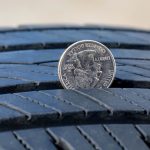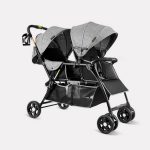
Seat Comfort
Make sure there’s adequate lumbar and bolster support (which will help stabilize you during cornering) and that neither feels tight nor digs into your back. Are the cushions too soft? They might seem plush at first but may not provide adequate support on longer drives.
We like seats with multiple adjustments—two- or four-way lumbar support, an adjustable bottom cushion, and adjustable bolsters. Rear seats should be supportive and provide adequate headroom and space for a rear passenger’s feet to fit under the front seat.
Driving Position
A good driving position keeps fatigue to a minimum. Look for a car with a tilt-adjustable, telescoping steering column. We believe this feature is key for helping drivers of various sizes find the best position for arm comfort. Neither the center console nor the door should intrude into the driver’s leg space, and the left footrest should be at a good angle and distance.
Ride Comfort
Make sure the ride is smooth and comfortable by taking the car on a potholed road to feel whether the suspension adequately soaks up road imperfections. Low-profile tires may look nice, but they can make for a rougher ride on a bumpy road. A stiff suspension can get irritating after a while and lead to driver fatigue.
Noise
Make sure that you’re satisfied with the level of engine, wind, and road noise, and keep in mind that a short 10-minute test drive is different from a long trip or commute. Some cars make more engine noise than others, and cars with convertible tops and specialty tires, such as knobby off-road tires, can have more wind and road noise.









